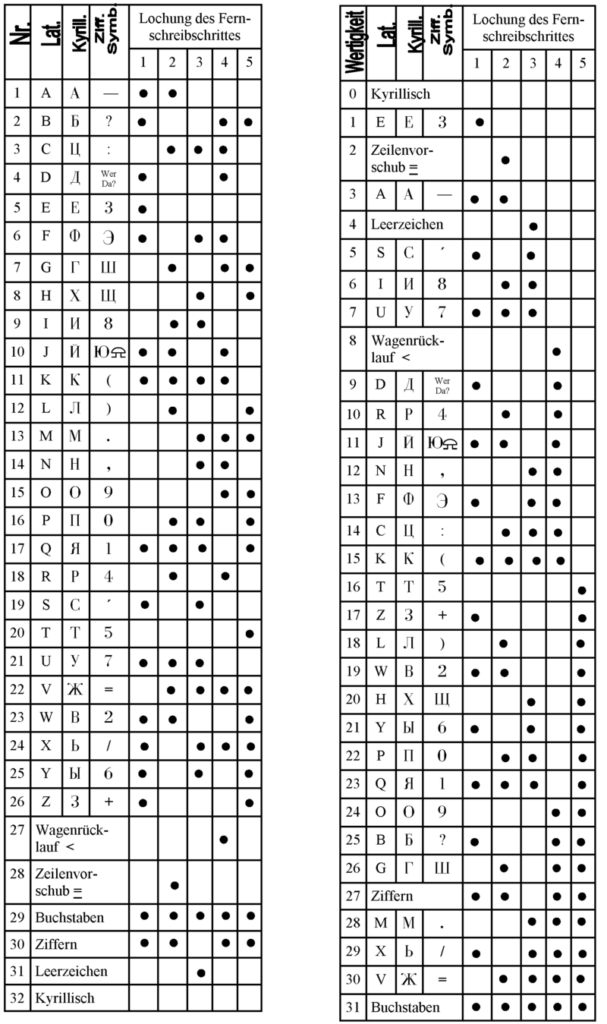https://en.wikipedia.org/wiki/Baudot_code
To facilitate character entry, Donald Murray developed a keyboard around 1901 similar to that of a typewriter that punched the associated string of five bits into a punched tape by pressing a single key. This punched tape immediately ran into a transmitter that read and transmitted the punched code.
Murray retained Baudot’s level switching, but rearranged the order of characters in the code so that frequently used letters, such as “E” and “T” were given code positions that required shorter and less frequent movement of the mechanics in the equipment to transmit and receive. This reduced wear and tear and the need for maintenance. Murray also added a line change character to subdivide telegrams.
After some adjustments and improvements, the code thus modified was standardized by CCITT in 1932 as International Telegraph Alphabet No. 2 (CCITT-2 or ITA2 for short).

